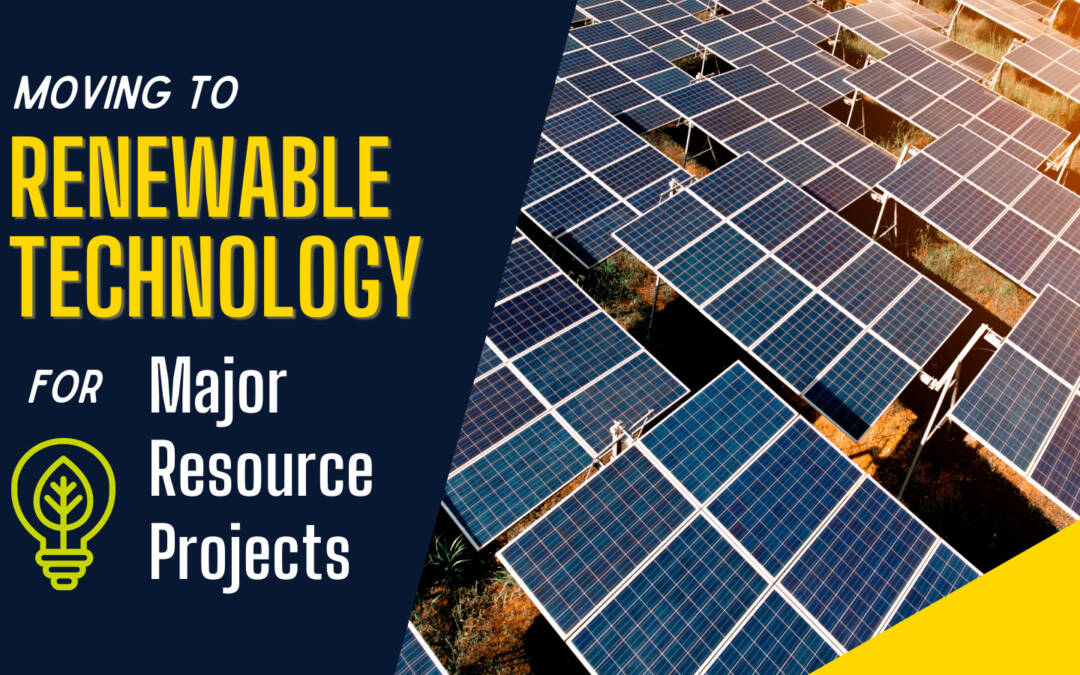While Australia’s resources sector has long been a vital part of the country’s economy, the environmental damage caused by large-scale mining is threatening the sector’s future (Mining Technology, 2020). Given this impact, the mining industry is under greater pressure than ever to reduce its environmental footprint.
The mining industry is responsible for 4-7% of global greenhouse gas emissions (Watson Farley & Williams, 2020). Australia has lofty targets to reduce its emissions to 26% lower than the levels recorded during 2005 by 2030, based on agreements signed in Paris and Copenhagen, respectively. Unfortunately, we will miss this goal unless the industry takes drastic action to improve its environmental performance (Mining Technology, 2020).
Over the past 10 years, renewables have become more and more competitive, and with Australia’s tremendous wind and solar resources, it makes sense that the Australian resources industry seizes the opportunity to incorporate renewables into its operations (Australian Mining, 2020).
This insight presents some of the renewable energy solutions that have been integrated into operations across Australia, along with some of the benefits and challenges of utilising renewables in mining operations.
Goldfields Agnew Gold Mine – Agnew, Western Australia
In 2020, the installation of a 56 MW ‘hybrid’ microgrid project at the Gold Fields’ Agnew Gold Mine was completed. The microgrid is comprised of five wind turbines capable of delivering 18 MW of power, a 10,000-panel solar farm contributing 4 MW, a 13 MW/4 MWh battery energy storage system and a 16 MW gas-engine power station. The Australian Renewable Energy Agency (ARENA) supported the project with a grant of $13.5m. The renewables component of the project is expected to provide up to 70% of the mine’s energy requirements. The project is recognised as Australia’s largest renewables microgrid and the first in-country to utilise wind generation to this scale on a mine site (Swain & Bukowski, 2021).
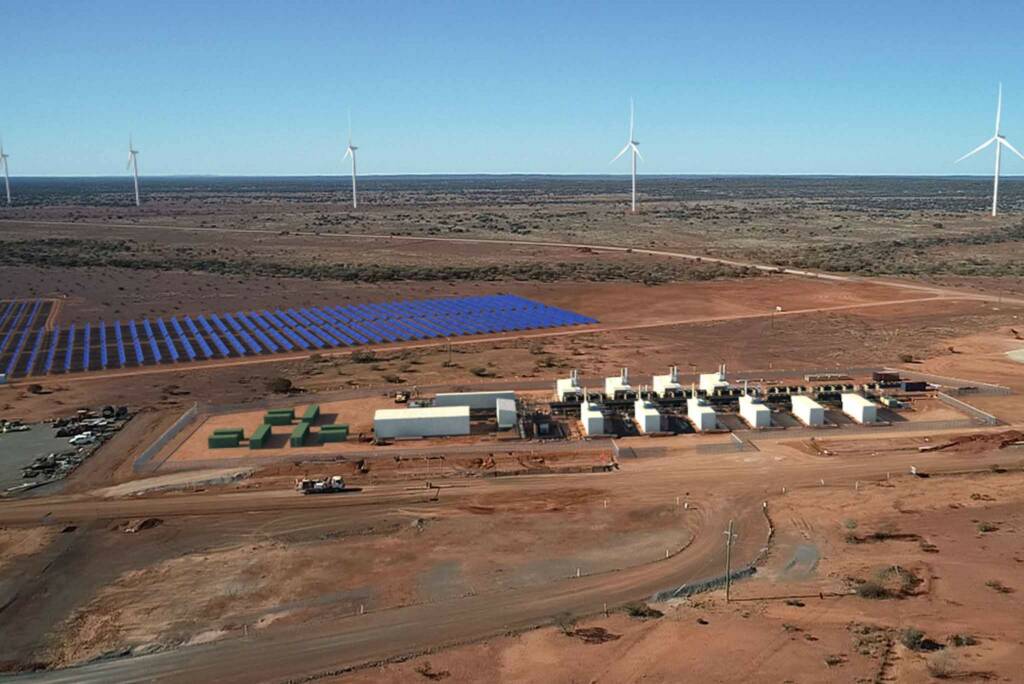
DeGrussa Copper and Gold Mine – Doolgunna Station, Western Australia
Sandfire’s DeGrussa solar facility has been in operation since 2016. With a $40m investment and 34,080 solar panels covering 20 hectares, Sandfire tentatively claims to be the largest off-grid solar and battery storage plant in the world (Mining Technology, 2020).
The mine has produced 438,000t of copper and 254,000oz of gold since production began in 2012, and production of both metals peaked in 2016 when the solar facility was commissioned. The panels supply around one-fifth of the mine’s annual power requirements and have cut the project’s annual emissions by 15%, a total reduction of 12,000t of CO₂ a year (Mining Technology, 2020).
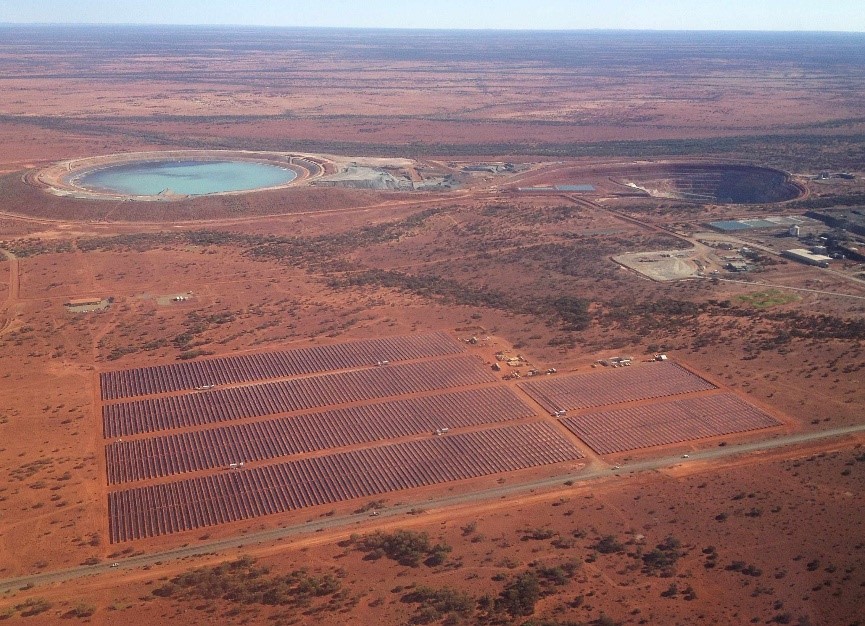
Cannington Silver and Lead Mine – McKinlay, Queensland
South32’s Cannington mine has been one of the world’s largest producers of silver and lead since production began 20 years ago. In December 2018, the mine opened a 7,200-panel solar farm that will predominantly be used to power the mine’s accommodation and airport, with additional power going to mining operations. The solar farm will cut down annual greenhouse emissions by up to 6,000t (Mining Technology, 2020).
Mount Cattlin Lithium Mine – Ravensthorpe, Western Australia
Galaxy Resources’ Mount Cattlin mine is already one of the country’s cleanest operations. The mine has installed 14 solar trackers and two wind turbines, ensuring 15% of the mine’s annual power needs are met by renewable sources. The remainder of the power comes from a diesel generator – however, the mine is working on ramping up renewable production to the point where the operation is powered entirely by clean energy, which would be a first in Australia (Mining Technology, 2020).
With the mine already cutting its annual carbon emissions by 200t due to the trackers and turbines, the project is proof of the feasibility of gradually shifting from a conventionally-powered operation to a clean mine through hybrid technology (Mining Technology, 2020).
Coober Pedy – Far North, South Australia
Australia’s other significant renewably powered mining project is in the South Australian town of Coober Pedy, a remote settlement whose mineral extraction industry is powered by a hybrid wind and solar scheme. The programme began in July 2017 and combines a 4MW capacity wind farm with a 1MW capacity solar field to deliver a constant supply of renewable energy to the town; to date, the project has cut down on emissions equivalent to the removal of 1,800 cars from the road per year (Mining Technology, 2020).
To demonstrate the effectiveness in what is possible with renewable technologies, Coober Pedy was powered entirely by stored energy from renewable sources for 81 consecutive hours, and while the solar and wind farms were disrupted by events such as a lightning storm and technological faults (Mining Technology, 2020).
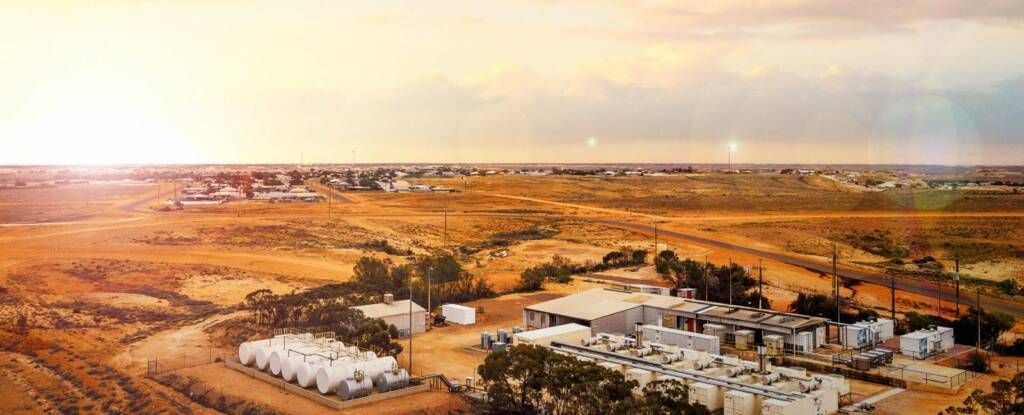
Fortescue Metals Group – Perth, Western Australia
The West Australian based Iron Ore mining company has invested heavily in renewables and green hydrogen production (Fitzsimmons, 2021). Some of their current key investments in progress are:
- Plans to start building Australia’s first green steel pilot plant this year in the Pilbara, powered entirely by wind and solar, with the commercial operation to commence in the next few years.
- A partnership with the CSIRO to develop new hydrogen technologies, including a world-first membrane technology which provides the potential for large scale hydrogen extraction from ammonia.
- A $32 million hydrogen mobility project at Christmas Creek in WA’s Pilbara region, including the construction of a renewable hydrogen refuelling facility and the deployment of a fleet of hydrogen fuel cell passenger coaches from mid-2021.
- A partnership with ATCO Australia to build and operate the first combined green hydrogen production and refuelling facility in Western Australia.
- A Memorandum of Understanding with Hyundai Motor Co and CSIRO to advance renewable hydrogen technology for domestic transport.
- Investment in hydro and renewable feasibility studies for projects in Papua New Guinea.
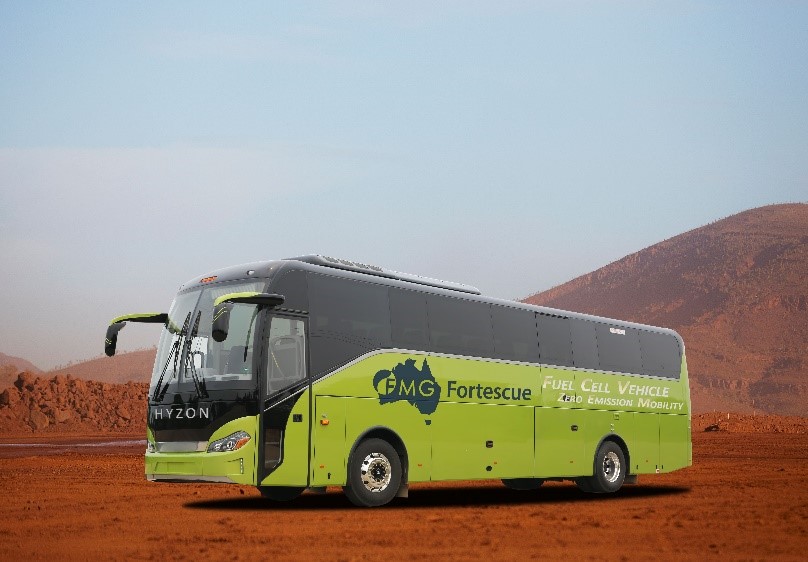
Benefits of utilising renewable technology for major projects
The case of renewables is strong. Some of the key benefits for incorporating renewables into mine projects are as follows (Australian Mining, 2020):
- Investors around the world are looking for environmentally-friendly companies to back.
- As technology improves and renewables become more efficient, prices are becoming increasingly affordable.
- Fossil fuel prices trending upwards, and market volatility can be hedged with renewable energy sources.
- Grants are available through programs such as the ‘Advancing Renewables Program’ (Australian Government, 2021).
- There is a reputational advantage for companies incorporating renewables, and companies are seen favourably by stakeholders and the public.
- Incorporating renewables into a project allows a company to reduce their carbon footprint and aids in meeting greenhouse gas emission targets.
- Limited operating expenses associated with a wind or solar farm.
- Post closure opportunities to gift or sell on renewable infrastructure for local communities to utilise (Deloitte, 2017).

Challenges of utilising renewable technology for major projects
Implementing renewables into a mining project is not without its challenges. Challenges today however are not as significant as they were, thanks to technology advancements. A few key challenges that may be encountered are as follows (Australian Mining, 2020):
- Initial outlay of purchasing and setting up renewables can be capital intensive.
- A medium to long term view is needed when investing in renewables to see capital returns.
- A balanced energy mix between renewables and traditional energy sourcing will need to be incorporated to ensure continuous energy stability for a project. An experienced independent power producer should be deployed to integrate the renewable technology into the electricity supply plan of the mine.
Renewable technology has reached a point where it is not a matter of if it should be incorporated into major projects but rather a matter of when. Renewables should not be evaluated purely by cost. There are significant social and environmental opportunities and benefits to factor in when considering the implementation of renewables, surplus to their financial proposition as a replacement for traditional fuel sources.
If your organisation would like to learn more about incorporating renewables into your projects, please contact us by email at enquiries@integratesustainability.com.au or call us on 08 9468 0338.

References
Australian Government, 2021. How to Apply for Funding. [Online]
Available at: https://arena.gov.au/funding/advancing-renewables-program/
Australian Mining, 2020. Renewables are a no brainer for the Australian mining sector. [Online]
Available at: https://www.australianmining.com.au/features/renewables-are-a-no-brainer-for-the-australian-mining-sector/
Deloitte, 2017. Energy and Resources. [Online]
Available at: https://www2.deloitte.com/content/dam/Deloitte/global/Documents/Energy-and-Resources/gx-renewables-in-mining-final-report-for-web.pdf
[Accessed 13 October 2021].
Fitzsimmons, H., 2021. FMG Chases Green Dream. [Online]
Available at: https://www.energycouncil.com.au/analysis/fmg-chases-green-dream/
[Accessed 13 October 2021].
Mining Technology, 2019. Going green: renewable energy projects at mines around the world. [Online]
Available at: https://www.mining-technology.com/features/going-green-renewable-energy-projects-at-mines-around-the-world/
Mining Technology, 2020. Mapping renewable energy projects at Australian mines. [Online]
Available at: https://www.mining-technology.com/features/mapping-renewable-energy-projects-at-australian-mines/
Swain, K. & Bukowski, A., 2021. Australia: Mine site adoption of renewable initiatives. [Online]
Available at: https://www.mondaq.com/australia/renewables/1063250/mine-site-adoption-of-renewable-initiatives
Watson Farley & Williams, 2020. Mining and Renewable Energy – A Greener Way Forward. [Online]
Available at: https://www.wfw.com/articles/mining-renewable-energy-a-greener-way-forward/

